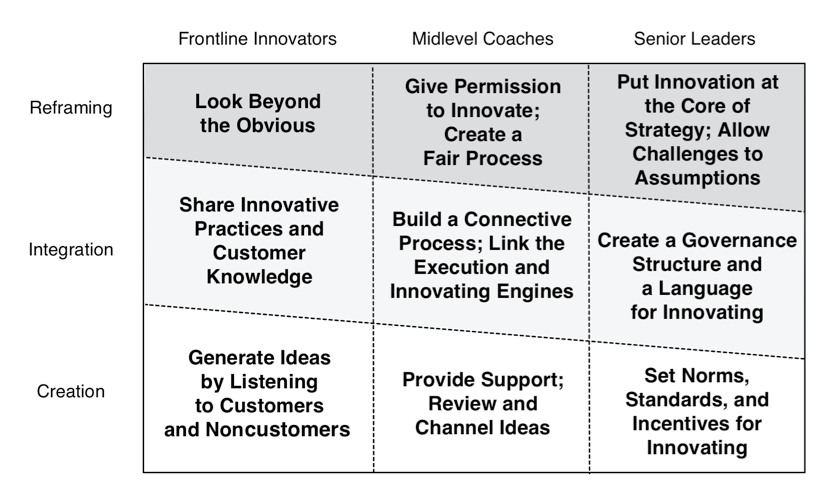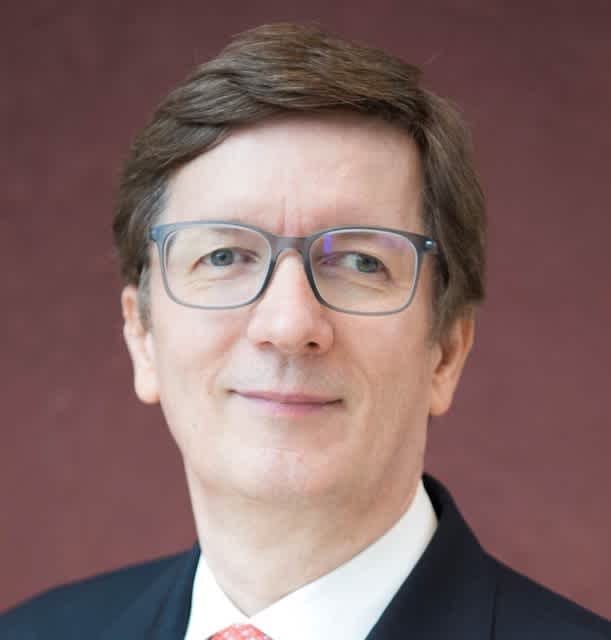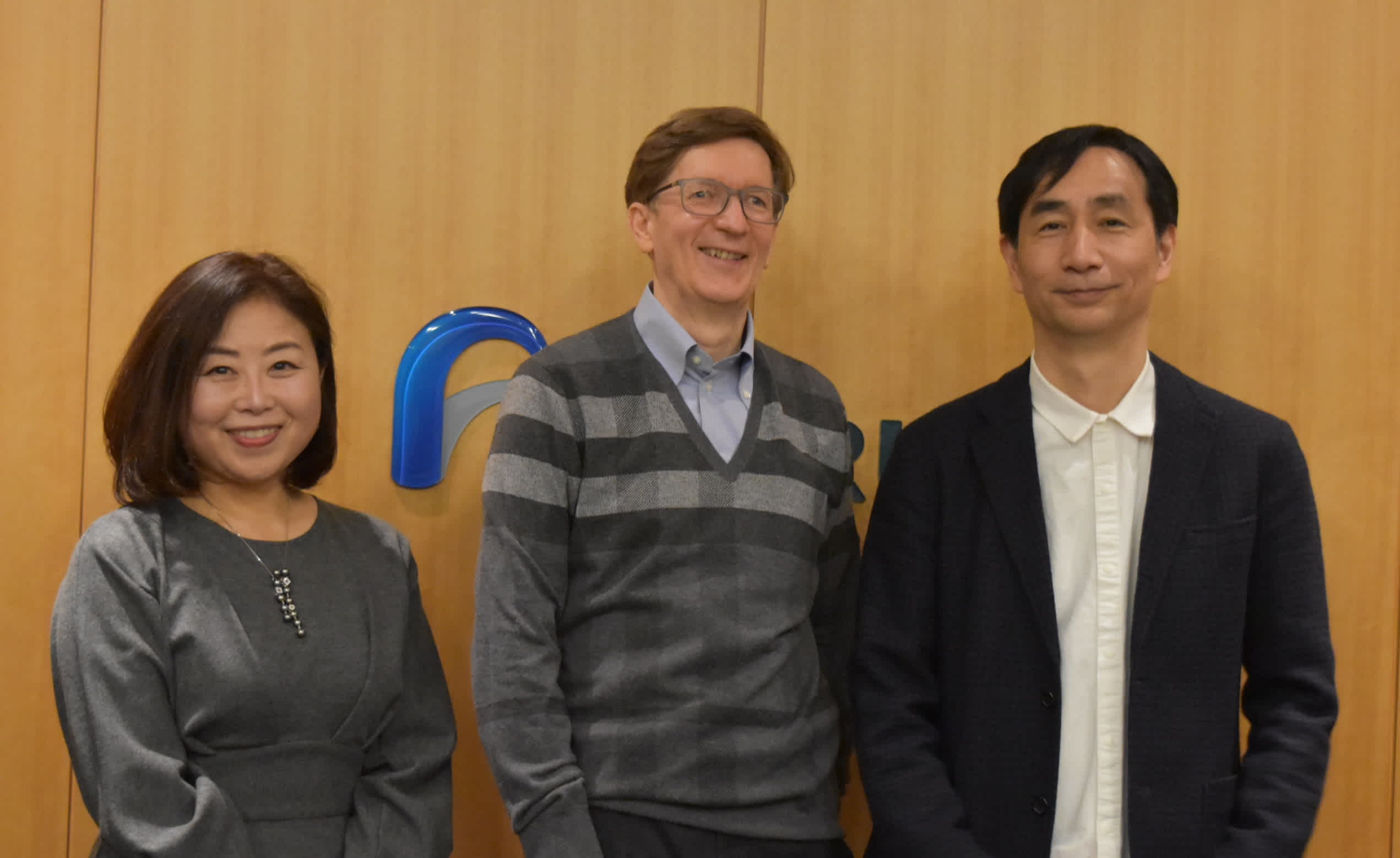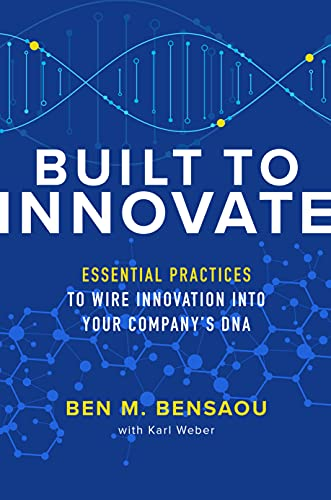INSEAD Professor Ben Bensaou’s View on Recruit Group's Efforts
I am currently a Professor of Technology Management and Professor of Asian Business and Comparative Management at INSEAD. I have also been consulting for many corporations around the world, helping them instill innovation into their corporate DNA. My new book, "Built to Innovate: Essential Practices to Wire Innovation into Your Company's DNA" (McGraw-Hill Education, 2021), is the result of nearly 20 years of related research and practice. In this book, I introduced Recruit as one example of a company implementing essential innovation practices.
Midlevel managers are the key to innovation
People often think that innovation solely stems from the work of genius leaders or startups. However, in an increasingly complex world, it is not enough for one genius or a company R&D department to be the source of all innovation. After many discussions with companies around the world, I am convinced that it’s crucial to embed in an organization a culture of continuous and systematic innovation where everyone can participate. My book features a proven system and framework for building relentless innovation into your company’s DNA, based on essential practices from many of the world’s most innovative organizations.

The “Built to Innovate” Framework Innovation by Anyone, Any time, Anywhere: How the Three Processes of Innovation Take Place at Three Levels of an Organization
Midlevel managers have a unique job in the "Built to Innovate" framework. They are the "glue" that connects the company’s top leadership with its frontline workers, creating connections across cross-functional teams, departments, and divisions. Midlevel managers are responsible for supporting the innovative efforts of frontline workers; they offer encouragement, coaching advice, and connections to other colleagues to streamline the development and implementation processes. They also must help to organize and operate the system that winnows, channels, develops, and ultimately launches innovative concepts.
There are three important elements that the leaders of an organization must provide to empower their teams to participate in innovating:
Give them permission to innovate (That is, letting them feel "able to innovate").
Give them the skills, support, and tools they need to innovate (helping them to be "capable of innovating").
Nurture in them the desire to innovate (making them feel "motivated to innovate").
I found in my research that if it works, anybody in all departments of your company—including reception, legal and human resources and more—can contribute to innovation. Even if it is possible in a mature industry that employs business models developed more than a century ago. This is what I wanted to emphasize most in the book, and it’s something I teach every day.

Ben Bensaou INSEAD Professor
The first idea inspired by an encounter with Recruit 20 years ago
In fact, I have already grappled with this idea for 20 years—and the first inspiration for these concepts came from an encounter with the folks at Recruit in the early 2000s.
In 2001, I went to Tokyo on behalf of INSEAD for a three day training program on "Blue Ocean Strategy'' (previously called "Value Innovation Strategy''), where I led a training session on innovation. There were about 30 participants, including some managers from major Japanese corporations and government agencies, as well as some young and energetic men and women from Recruit who were eager to learn. One was Yukiko Nagashima, a midlevel manager in the human resources department, and the other was Naoji Iwashita, a manager at Recruit’s "Car Sensor."
The three days of lectures were followed by a talk a few months later, to observe, help, and coach the participants in how they were using the tools and discover the thinking behind value innovation. When I returned to Tokyo again, I spent some time with Mr. Iwashita at Car Sensor. I remember that it was exciting to be able to see fantastic work that Mr. Iwashita was doing with the tools from the training, and the stimulation he experienced thereafter. And that was one of the major turning points for me.
At that time, he taught me a very simple thing. He said, when frontline people come to their boss with an idea and the boss keeps rejecting these ideas, the employees feel like they cannot propose ideas that might lead to innovations. His first rule was to thank someone every time they came to see him with an idea. As soon as he started to say "thank you," he got flooded with people coming to see him. Many ideas were good, but others were not as well-thought out. Mr. Iwashita decided to train his team members to think about and test their own ideas with three questions:
How will this idea create value for the customer? If you don't know, ask the customer.
How would it help reduce the cost or create value for the company?
Should we actually pursue this idea?
These questions instilled discipline and critical thinking skills within Mr. Iwashita’s team, fostering a work culture where everyone feels welcome to innovate.
In 2020, someone from Recruit informed me about the newest innovation by the Car Sensor division. The first idea of the new business was proposed by a frontline employee in 2015, and was actually turned down because of its complexities. The idea went through many iterations before finalizing its business model. Car Sensor president Masami Muro, who is known to support innovative ideas that he thinks have potential (even ones that produce initial resistance), is dedicated to inspiring, training, and empowering his team members to make the most of their innovative powers. He was intrigued enough to spend time with the team member who proposed the idea to him, and reviewed the details of the proposal and offered specific suggestions for improvement. More coaching and further improvements followed—not once or twice, but repeatedly. In the end, it took almost five years of experimentation for the frontline team to develop a business plan that the entire Car Sensor senior management team approved.
I believe this is one of many great examples of the role that midlevel managers play in turning the ideas of one employee into an innovative venture. You can read more about this case study in "Built to Innovate: Essential Practices to Wire Innovation into Your Company's DNA".

Car Sensor’s first issue, which launched in 1984.
Over 20 years of embracing rich diversity
As previously mentioned, I was immediately impressed by Yukiko Nagashima in our first encounter, who was fully engaged during the training session. I found that Recruit had comparatively quite a strong representation of women in managerial positions. Having them at a high level of leadership is something very unique, especially in the early 2000s. I was also surprised by how much Recruit executives had a strong sense of autonomy and leadership compared to older, more experienced participants in the training sessions. I thought that Recruit had some very energetic, dynamic, and quite young leaders compared to other Japanese companies I’d worked with during my long career. For example, when we asked Recruit for help with our research, Ms. Nagashima enthusiastically supported us. When I learned that Ms. Nagashima is now a Standing Audit & Supervisory Board Member of Recruit Holdings, it was no surprise to me.
Recruit Founder Hiromasa Ezoe developed the slogan, "Create your own opportunities and let the opportunities change yourself," which became one of the company’s touchstone concepts. I feel that the Recruit professionals I met 20 years ago, who are autonomous, highly motivated to learn, and actively use their input in their work, fully embody this slogan.

Naoji Iwasita (right), Ben Bensou (Center), and Yukiko Nagashima (left) reunited at Recruit's headquarters after about 20 years
Potential challenges that Recruit may face
Recruit is people oriented. I think one of the strengths of the group, which has been the foundation for changing and innovating for almost 60 years, is its diverse talent pool, which has assertiveness and strong desire to learn. 20 years ago, Recruit was already ahead of other Japanese companies in the field, and it gave the company an advantage of expanding globally. Diversity has become even more critical to global businesses. I think that one of the challenges for Recruit in the future will be how to continue to maintain the strengths it offers as a global organization.
Another big challenge will be whether Recruit can transfer the culture of innovation that I have described to its subsidiaries outside Japan. In addition to the impressive role that midlevel managers bring to fostering new innovation across the organization, Recruit also has implemented unique events regularly such as "Ring" and "FORUM" for frontline innovation. It will be very interesting to see if this kind of culture can be expanded globally, or if Recruit can learn from overseas businesses to further strengthen its culture.
I would like to see Recruit take advantage of the capability and flexibility it has developed so far, and learn from the positive aspects and high-potential talents of group companies all over the world, continuing to inspire further innovation. I believe that the group would create synergies with their excellent cultures and businesses, and continue to create a great impact on society.
Ben M. Bensaou
Professor at INSEAD
Ben M. Bensaou is a Professor of Technology Management and Professor of Asian Business and Comparative Management at INSEAD, Fontainebleau, France. He served as Dean of Executive Education from 2018–2020. He was a Visiting Associate Professor at Harvard Business School from 1998–1999, a Senior Fellow at the Wharton School of Management from 2007–2008, and a Visiting Scholar at the Haas School of Business at the University of California, Berkeley from 2013–2015. He received his PhD in Management from MIT Sloan School of Management, Cambridge, MA (US) and his MA in Management Science from Hitotsubashi University, Tokyo, Japan; his Diplôme d’Ingénieur (MSc) in Civil Engineering and DEA in Mechanical Engineering from respectively the Ecole Nationale des TPE, Lyon and the Institut National Polytechnique de Grenoble, two Grandes Ecoles in France. His case studies on innovation won the 2006, 2008, and 2009 ECCH Best Case Awards (with Kim & Mauborgne). He has also been teaching in Executive Education programmes at Keio Business School, Tokyo, Japan. He has been consulting for Asian, European and US corporations since 1993.

BOOK INFORMATION
Built to Innovate: Essential Practices to Wire Innovation into Your Company's DNA
Ben M. Bensaou (Author), Karl Weber (Author)
Publisher : McGraw-Hill (2021/9/28)
Language : English
Yukiko Nagashima
Standing Audit & Supervisory Board Member, Recruit Holdings Co., Ltd.
Yukiko Nagashima assumed her current role as a Standing Audit & Supervisory Board member for Recruit Holdings in 2016. She started out in Recruit Holdings’ HR business and transferred to the HR department in 1995, where she led talent management initiatives. In 2002, she spearheaded the growth of Zexy bridal business, and in 2006, Ms. Nagashima was appointed Corporate Executive Officer of Recruit. Two years later, Ms. Nagashima became President and Representative Director of Recruit Staffing Co., Ltd., where she promoted productivity-focused work styles and diversity and inclusion in the workforce.
Naoji Iwashita
Division Director of Research Office and Evangelist of Recruit Business Competence Institute, Recruit Co., Ltd.
Naoji Iwashita joined Recruit in 1987. He was in charge of product planning and business planning in the telecommunications, automobile, and travel divisions, and devised the original "Ribbon Model" for business management. After working as the head of the e-commerce unit, he was transferred to the Competence Management Support Office (currently the Recruit Business Competence Institute) in 2007. Mr. Iwashita is currently involved in business support and human resource development for group companies. Since 2020, he has also served as the head of the Research Office, which oversees Recruit's research institute functions.